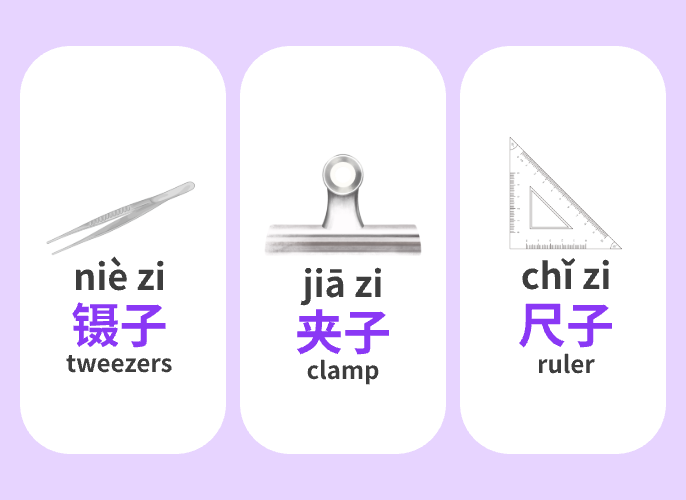Hot Articles
Shadowing: The best way to master Chinese Pronunciation
The best way to master Chinese Pronunciation

The tonal nature and rhythmic complexity of Mandarin Chinese pose distinctive challenges for language learners, making spoken acquisition significantly different from that of non-tonal languages. Among various pedagogical approaches, the shadowing technique—defined as the immediate repetition of heard speech—proves to be especially effective for developing oral proficiency in Chinese. This auditory-mimetic strategy aligns well with Mandarin’s phonological structure while addressing common difficulties in second language acquisition, offering cognitive, linguistic, and practical benefits that traditional classroom methods often overlook.
"Tones are the soul of Chinese," linguist San Duanmu reminds us, pinpointing the core challenge for learners (The Phonology of Standard Chinese, 2007). For years, my own attempts to capture this elusive "soul" involved textbook drills and tone diagrams, yielding frustratingly robotic and often misunderstood speech. It wasn't until I embraced shadowing – the immediate, attentive echoing of native audio – that the intricate melody of Mandarin began to resonate authentically within my own voice. My experience, supported by pedagogical research, confirms that shadowing is indeed the most effective path to mastering Chinese pronunciation.
Shadowing, rigorously defined by polyglot Alexander Arguelles, involves listening through headphones while simultaneously and loudly replicating the speaker’s output with minimal delay, focusing intently on sound rather than meaning initially (Language Learning Journal, 2005). This technique forces the learner into a state of hyper-attentive mimicry. Unlike passive listening or delayed repetition, shadowing creates a direct neurological bridge between auditory input and vocal output. As I discovered during intense sessions with podcasts like "Slow Chinese," the immediacy bypasses the analytical filter that often distorts tones and rhythm. Struggling to instantly reproduce a phrase like "他特别喜欢喝茶" (Tā tèbié xǐhuān hē chá - He particularly likes drinking tea), I wasn't just hearing the subtle fall-rise of "喜欢" (xǐhuān); my vocal cords were physically learning its contour through relentless, real-time repetition. The difference wasn't merely audible; it was kinesthetic.
The benefits are multifaceted and profound:
- Tonal Precision: Mandarin's four tones (plus the neutral) are notoriously difficult for learners from non-tonal languages. Shadowing engrains the pitch contours physically. Research by Yang and Chan highlights its effectiveness, showing learners using shadowing demonstrated significantly improved tone identification and production accuracy compared to traditional methods (Journal of Chinese Language Teachers Association, 2010). I vividly recall the breakthrough moment shadowing a dialogue where my previously merged second (rising) and third (dipping) tones finally diverged, simply because my voice was forced to follow the native speaker’s undulations precisely.
- Rhythm and Flow (Prosody): Chinese isn't just tones; it's a language of rhythm, stress patterns within words, and the flowing connection between syllables. Shadowing forces the learner to adopt the natural cadence and linking of native speech. My early speech suffered from a staccato, syllable-by-syllable delivery common to beginners. Shadowing news broadcasts from "China Plus" taught me the fluidity of phrases like "我不知道" (Wǒ bù zhīdào - I don't know), where the syllables blend almost seamlessly, far removed from my initial robotic "Wǒ... bù... zhī... dào."
- Intonation and Nuance: Beyond individual tones, the overall musicality of a sentence – the questioning lilt, the declarative fall – is crucial for sounding natural and conveying attitude. Shadowing expressive content, like movie dialogues or talk shows, trains the ear and voice to capture these subtle shifts. Mimicking a native speaker's exasperated "真的吗?" (Zhēn de ma? - Really?) with the appropriate skeptical rise felt awkward initially, but gradually became instinctive.
- Phonetic Accuracy: Initials, finals, and tricky sounds like "q," "x," "zh," "ch," "sh," "r," and the elusive "ü" require precise tongue and lip placement. Shadowing provides constant auditory feedback, allowing for micro-adjustments. Recording myself shadowing and comparing it directly to the source using tools like Audacity was revelatory; discrepancies I couldn't hear in real-time became glaringly obvious upon playback, enabling targeted correction.
My journey wasn't without effort. Initial sessions were mentally exhausting, requiring intense focus. Choosing appropriate material – starting painfully slow and clear, then gradually increasing speed and complexity – was crucial. Early on, materials like "ChineseClass101" beginner dialogues were manageable. Later, I progressed to TEDx talks and authentic interviews. Patience and consistency were paramount; noticeable improvement required weeks of daily practice. I also encountered interference from my native English prosody, particularly a tendency to stress content words too heavily, flattening the tonal distinctions. Overcoming this required conscious effort during shadowing, focusing intensely on letting the Mandarin melody override my ingrained habits.
The transformation was undeniable. Where once my requests in Beijing tea houses were met with puzzled looks or requests for repetition, I began receiving spontaneous compliments: "你的发音真好!" (Nǐ de fāyīn zhēn hǎo! - Your pronunciation is really good!). More importantly, communication became smoother, less fraught with the tension of potential misunderstanding. As researcher Qunhu Chen notes, accurate pronunciation significantly enhances learner confidence and willingness to engage (Foreign Language Annals, 2015) – a benefit I felt profoundly.
While understanding grammar and vocabulary is essential, pronunciation is the gateway to being understood and respected. As Alexander Arguelles advocates, shadowing provides the immersive, real-time vocal training that textbooks and isolated drills simply cannot replicate. It demands dedication and acute listening, but the reward – the ability to truly embody the "soul" of Chinese tones and rhythm – is unparalleled. Through the persistent echo of the native speaker's voice, the learner’s own voice gradually sheds its foreign accent, finding its authentic place within the beautiful, complex melody of Mandarin. The shadow, diligently followed, eventually becomes substance.









